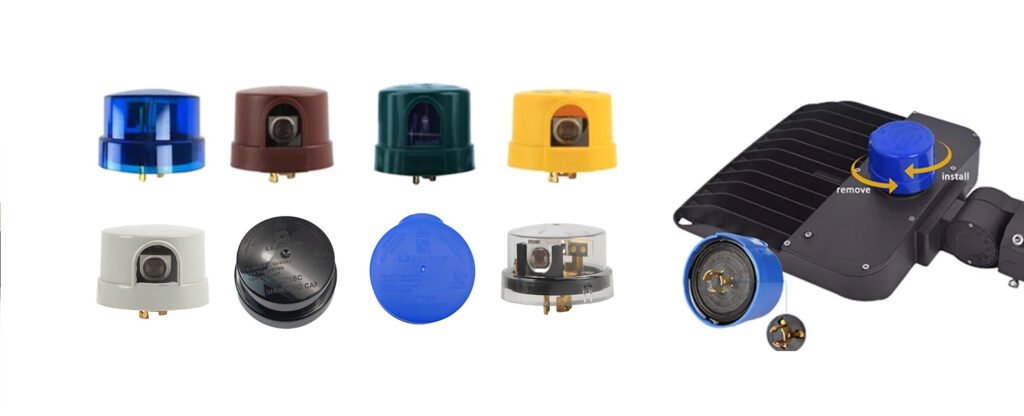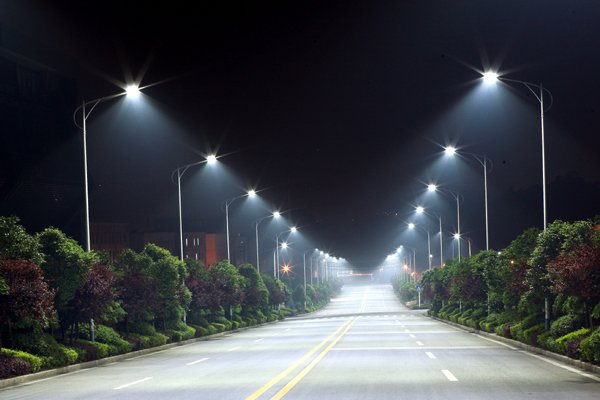Outdoor lighting has a critical role in present infrastructure, from domestic entrances to municipal streetlights and extensive industrial facilities. At the center of these systems are photocell sensors—normally identified as dusk-to-dawn sensors—which robotically button lights on at night and off at dawn. Though their function looks straightforward, selecting the right sensor is not as simple as it seems to be. One of the most significant contemplation is the voltage rating.
The question is why these photocell sensors exist in many voltage options, such as 120V, 208–240V, 277V, 347V, and even 480V? The answer is in regional electrical standards, safety requirements, and the varied applications of outdoor lighting systems. To understand these distinctions safeguards correct dusk-to-dawn sensor compatibility, better system dependability, and prolonged performance.
Basics of Voltage in Lighting Systems
Voltage is the degree of electrical potential that powers lighting utensils. For outdoor lighting, voltage needs to be stay steady to avert fiasco, high temperature, or energy waste. A célula fotoeléctrica sensor perform as a control device among the power supply and the luminaire, which means it need to be rated for the right voltage range.
In case of any incongruity —such as, using a 120V photocell on a 277V lighting circuit—the sensor can overheat, fail ahead of time, or create a safety hazard. This is why photocell voltage ranges are not uniform but in its place designed to different power grids and project needs.
Common Voltage Categories for Photocell Sensors
Photocell sensors are normally manufactured to line up with the most common outdoor lighting voltage systems in use internationally. The most common groupings are:
- 120V – Mainly used in North American domestic and small commercial regions. Perfect for home safety lights, entryway fittings, and garden trails.
- 208–240V – Used in Europe, Asia, and Middle East, in addition to several industrial regions in North America, this range covers both domestic and mid-scale commercial applications.
- 277V – Commonly used in U.S. public and commercial projects, specially for streetlights, parking lots, and warehouses.
- 347V / 480V – In Canada commonly used in airports and main roads. These higher voltages backs wide networks of luminaires over long distances.

As electrical surroundings vary extensively, constructers likewise manufacture multi-voltage photocell sensors. These models simplify acquisitions and fittings, making them smart for contractors and cities that cope with miscellaneous projects.
Why Matching Voltage Matters
Going for the accurate voltage is important for safe and dependable dusk-to-dawn operation. Using the wrong sensor can cause several concerns:
Under-voltage problems – Lights fail to switch on as the sensor does not receive sufficient power to function.
Over-voltage damage – Additional voltage causes the photocell to overheat or damage the light fixture.
Electrical vulnerabilities – Inappropriate voltage ratings can lead to fire risks or jolt threats for workers.
Right sensor de anochecer a amanecer compatibility guarantees both the photocell and the luminaire perform as planned. Furthermore extends the lifecycle of the lighting system but also reduces expensive maintenance or substitutions.
Regional Power Standards
The heterogeneity of photocell voltage ranges is mainly formed by regional electrical standards.
- North America – Lighting systems frequently run on 120V or 277V, based on whether the application is domestic or commercial/municipal.
- Europe – The standard is 230V, making photocells in the 208–240V range most common.
- Asia & Middle East – Grids usually offer 220–240V, however certain industrial facilities possibly work at higher voltages.
- Canada – Generally uses 347V, especially for public infrastructure.
For producers, these variations build the need for both region-specific photocells and multi-voltage photocell sensors. The second helps fabricantes de equipos originales (OEM) and international suppliers to install lighting solutions through diverse markets without persistently altering hardware.
The Role of Load Compatibility
Although voltage is a main aspect, photocell performance moreover rest on on load compatibility—the capability of the sensor to cope with the type and wattage of the related fitting.
Out dated photocells were often designed for HID lamps, which draw high current during startup. Nevertheless, up-to-date LED lighting systems use significantly less power and perform in a different way electrically. A photocell designed for Escondido possibly will not function appropriately with LEDs, initiating blinking or unpredictable switching.
So servicers need to assess both outdoor lighting voltage and load requirements when identifying sensors. A 120–277V photocell rated for LED loads, for example, guarantees constancy and long service life in modern applications.
Practical Examples of Voltage Selection
To show the significance of selecting the right photocell voltage range, consider these practical scenarios:
- A landowner in Texas fitting road lights would pick a 120V photocell compatible with standard U.S. domestic circuits.
- A shopping mall in Europe may need a 230V photocell, bring into line with regional grid standards.
- A community streetlight system in Chicago would possibly use 277V dusk-to-dawn sensors, safeguarding compatibility with the city’s commercial infrastructure.
- An airport in Toronto operational at 347V would need higher-rated photocells proficient of handling the demands of an extensive, high-voltage system.
- A contractor having multiple projects across different voltage zones might standardize on multi-voltage photocell sensors to simplify installation and reduce inventory.



Looking Ahead: Smart Lighting and Advanced Photocell Design
Away from simple dusk-to-dawn control, many sensors are now integrated into smart lighting networks. These progressive photocells can:
- Interconnect with centralized management systems.
- Regulate sensitivity levels for energy proficiency.
- Support wireless protocols for distant monitoring and control.
In these progressive designs, however, photocell voltage ranges stay vital. Whether a sensor is “smart” or traditional, it still must be compatible with the outdoor lighting voltage of the system it controls.
Conclusión
Diverse voltage ranges in photocell sensors exist because outdoor lighting systems internationally are not uniform. From 120V residential circuits to 480V municipal grids, all project needs a compatible sensor to guarantee protection, effectiveness, and pro longed performance.
Electing the accurate photocell voltage range averts fiascos, lessens vulnerabilities, and outspreads equipment lifecycle. For many contractors and municipalities, multi-voltage photocell sensors offer a perfect resolution, proposing better flexibility, streamlined inventory management, and dependable dusk-to-dawn sensor compatibility across varied fittings.
For instance cities and industries continue to revolutionize their lighting structure, understanding and choosing the right dusk-to-dawn sensor voltage will always be a keystone of trustworthy and effectual outdoor illumination.
Referencias:






